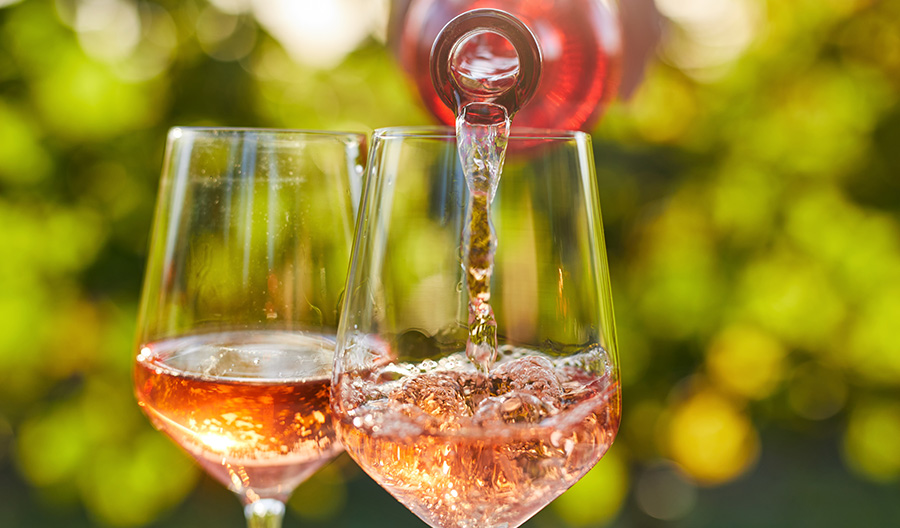Rosé has been on a roll for some years. While White Zinfandel and sweeter pink wines remain popular, many drier styles have won over hearts and palates. Plus, almost every region in the world that makes still rosé also makes a sparkling version.
These wines are made from almost all the great red grapes and vary in style from light to more delicate versions based on Pinot Noir to bigger, more fruit-forward takes made in Bordeaux that are made with Merlot and Cabernet Sauvignon grapes.
According to IWSR Drinks Market Analysis, sparkling rosé wine volume in the U.S. increased by 118 percent from 2015 to 2020 — a huge margin over the still wine category overall, which has only grown 1.5 percent over the same time period. The velocity of rosé growth, therefore, offers retailers a significant opportunity for expansion. Rosé will continue to disprove long-time perceptions of it being a summer-only beverage. Trends within the category include the explosive growth of sparkling rosé in particular, as well as a significant increase in the prices that consumers are willing to pay per bottle.
The varietals most often used in making a rosé wine include Pinot Noir, Syrah, Grenache, Cabernet Sauvignon, Tempranillo, Sangiovese, and Zinfandel. The style of the final wine can vary enormously depending on where the wine was produced and by whom.
Rosé Around the World
Rosé wines are made throughout the Old and New Worlds. The great, fruit-forward rosés of the North-East region of Spain are generally made from Grenache; while those of France’s Provence region are paler in color and generally a blend of Grenache, Cinsault, Mourvèdre, and Syrah. Sangiovese, Italy’s top grape variety, is one of the most under-appreciated and undervalued rosé grapes out there. In Italy, it is usually labeled as “Rosato” which is the Italian way of saying “pink.”

New World rosés tend to be quite different from their Old World counterparts. They are more fruity, with more pronounced berry flavors and deeper hues. South America is home to Malbec-based rosés and South Africa produces some terrific rosé, often made from Merlot grapes. Australian rosés are made from a variety of grapes, from dry Pinot Gris to full-bodied Nebbiolo, while the majority of New Zealand rosés are made from Pinot Noir grapes. No longer home to just White Zinfandel, American winemakers have taken full advantage of the diversity of rosé, from impossibly delicate Pinot Noir offerings to richly flavored versions made from Sangiovese or Grenache. It is now being produced in the most serious of ways from the West Coast to the East Coast.
While rosé sparkling wines can be made from a number of different grape varieties, the most traditional are generally made from 100 percent Pinot Noir and are called Blanc de Noirs. The tradition was started in the Champagne region and it is something that quality producers all over the world adhere to in both the Old and New Worlds. The method of adding bubbles to them varies from producer to producer.
How to Achieve that Rosy Hue
Today rosé wines are generally made by one of two main methods. The first is a maceration of juice with the skins of red grapes, allowing enough time for the wine to develop the desired color. The second is saignée, which means bled in French. During the process, some juice from dark-skinned red grapes is run off or bled into the wine. It is done to produce a lightly pink wine and increase flavor compounds in the juice, according to wine writer Jancis Robinson.
Rosés come in a myriad of styles and price points. Many are blends and some are single varietals. In terms of pairings, they can easily work with anything from salads to pork and tartare, salmon, and sausages. These easy-drinking wines tend to be crowd-pleasers and are great party and picnic wines, as they appeal to so many different palates.

